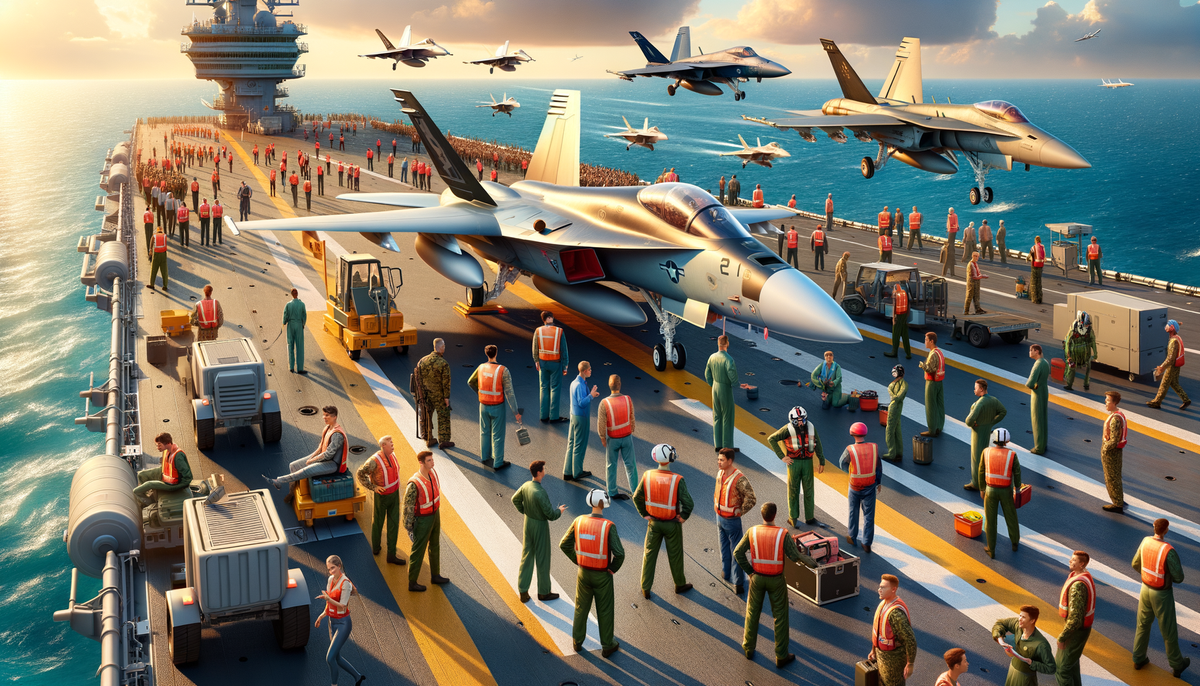Latest Developments in Aircraft Carrier Jet Technology
Stay informed about the latest in aircraft carrier jet technology and the challenges facing naval aviation today.

Latest Developments in Aircraft Carrier Jet Technology
The world of aircraft carrier jets has seen a flurry of activity recently, with significant developments and notable challenges that continue to shape the industry. One of the most talked-about incidents involved the loss of a U.S. Navy jet from the USS Harry S. Truman aircraft carrier. This incident, along with ongoing technological advancements, underscores the dynamic and challenging environment of carrier-based jet operations.
Overview of Aircraft Carriers and Carrier-Based Jets
Aircraft carriers are formidable vessels that serve as mobile airbases on the seas. With full-length flight decks, they support, arm, deploy, and recover aircraft, hence playing a pivotal role in naval warfare since World War II.
Design and Operational Challenges
Carrier-based jets are specially designed to meet the rigors of operating from aircraft carriers. They need to launch from short distances, withstand abrupt forces during takeoff and landing, and fit within the tight confines of a carrier's hangar, often necessitating folding wings. Operationally, these jets face challenges such as greater weight, slower acceleration, and increased fuel consumption compared to their land-based counterparts.
Technical Innovations in Jet Carrier Operations
Several technological advancements have been pivotal in integrating jet technology with aircraft carriers. British innovations such as steam-powered catapults, angled flight decks, and mirror landing-signal systems have greatly enhanced carrier jet operations. Modern carriers now boast sophisticated systems like radio and radar guidance for precise landings, further advancing the efficiency and safety of carrier operations.
Impact of Technological Evolution
The evolution of aircraft carriers from traditional designs to nuclear-powered behemoths has drastically increased their operational capabilities. The launch of the USS Enterprise as the first nuclear-powered carrier marked a significant milestone, freeing up space previously needed for fuel and exhaust systems, and thus enhancing both operational range and flexibility. This innovation set the stage for a diverse array of specialized carriers, each tailored for particular mission profiles.
Recent Incident: Jet Loss on USS Harry S. Truman
In April 2025, the US Navy faced a dramatic incident when a fighter jet fell off the USS Harry S. Truman. The loss of this Super Hornet underscores the constant challenges carriers face while reinforcing the need for continued innovation and precision in naval operations. Such incidents, though unfortunate, serve as learning opportunities that drive further advancements in safety protocols and technological integrations.
Practical Takeaways for Professionals
For professionals in the aircraft carrier jet industry, staying abreast of technological innovations is crucial. Emphasizing continual improvements in safety and efficiency can ensure more secure and effective operations. Engaging with cutting-edge technologies and practices can not only mitigate operational risks but also enhance overall mission success.
Company Expertise and Services
Our company stands at the forefront of providing insights and solutions in the aircraft carrier jet domain. We offer consulting services that help organizations implement state-of-the-art technologies and strategies, ensuring they remain at the cutting edge of naval aviation capabilities.
Conclusion: A Call to Action
The dynamic realm of aircraft carrier jets continues to evolve, presenting exciting opportunities and challenges. To learn more about how our services can enhance your carrier-based operations, contact us today. Let’s explore these innovations together, ensuring your fleet's readiness and operational excellence in this rapidly advancing arena.




